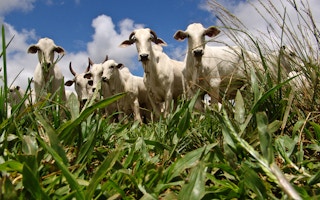Ending global hunger, once just a utopian vision, is now a goal within reach. Between 1990 and 2014, despite a so-called “world food crisis,” undernourishment worldwide fell steadily from 18.7 per cent to just 11.3 per cent, according to the United Nations. Dr Jim Kim, the President of the World Bank, now says that extreme poverty around the world can be ended by 2030, if governments take proper actions. When extreme poverty disappears, the worst kinds of hunger disappear as well.
We have learned how to attack hunger, even in rural South Asia and Sub-Saharan Africa where it remains most persistent. Here, the largest number of undernourished people are actually poor farmers, because their farming systems are unimproved and the productivity of their labor is so low. The proven path toward poverty reduction in these areas is increased government investment in roads, electrical power, irrigation, fertilizer, clinics, schools, and agricultural research.
Yet even if the hunger problem is overcome, a new problem will arise. The human need for food will eventually come to be met in the developing world, but the human appetite for diets that are rich in fish, meat, and animal products may be more difficult to satisfy.
“
Asking those who are newly prosperous to accept a vegetarian diet – something today’s wealthy countries would never tolerate – is not the answer. Paying more attention to the environmental, human livelihood, and animal welfare risks of expanded meat production, and to the regulatory requirements for reducing those risks, will be the place to start.
This growing demand is driven primarily by income growth. The International Food Policy Research Institute projects that, thanks to income and population growth in combination, the developing world will be consuming more than twice as much meat as it is consuming today by 2050.
A little bit of meat is a good thing
Among the world’s poorest people, increased meat, milk, egg, and fish consumption will be beneficial to human health, since it will address protein and micronutrient deficiencies that tend to persist even among those who are finally getting enough total calories.
Moderate meat and fish consumption is also good for bolstering human immune systems. In some regions, in fact, we should be hoping for a larger increase in meat consumption than the one now forecast: the projected rise from just 10kg per capita today up to only 12-13kg by 2030 in south Asia and sub-Saharan Africa is far too small to provide adequate benefit. Meat consumption does not become a risk to human health until we reach the average level in today’s rich countries, which is 95kg per capita.
However, increased meat consumption and production in poor countries will pose serious risks of another kind. If developing countries try to satisfy a doubling of demand for meat and fish consumption by simply expanding their traditional livestock and fish catch systems, the result will be an environmental calamity.
Traditional livestock methods, in Africa for example, would require twice as much pasture area and could destroy fragile grazing lands and natural wildlife habitats. If developing countries attempt to double their wild catch of fresh water or ocean fish, wild stocks that are already over-exploited will collapse.
Between 1990 and 2009, fish consumption in China increased at an annual rate of 6 per cent, roughly doubling every decade. To meet this demand, the government recently decided to expand its long-range fishing fleet by another 16 per cent between 2013 and 2015 alone, bringing new levels of risk to ocean resources.
Large-scale farms also bring risks
Some developing countries may choose to solve their animal and fish production problems by bringing in international companies to set up the industrial-scale systems now pervasive in the United States and Europe. Large concentrated animal feeding operations (CAFOs) make clear commercial sense in rich countries, where labor is expensive and investment capital is abundant.
In his book The Meat Racket, investigative journalist Christopher Leonard found that in the United States today, a large hog producer with 5,000 pigs can raise a pound of pork with 28 per cent less feed and 70 per cent less human labor than a smaller producer with only 500 pigs. In developing countries, however, conditions are different: investment capital is scarce, labor is more abundant, and livelihoods depend on small to mid-sized operations.
The United Nations Food and Agriculture Organization has estimated that 70 per cent of the world’s 1.4 billion poorest people raise livestock for meat, milk, or eggs. In Kenya 85 per cent of milk sold in the country today comes from small producers with fewer than five cows.
If these traditional systems are bypassed or replaced too quickly by industrial scale CAFOs, the livelihoods of the poor will be placed at risk. It makes more sense to begin with upgrades in veterinary medicine, feed quality, and marketing, while postponing investments in highly-specialized, fully automated systems.
There are also significant environmental risks associated with industrial-scale production systems.
Concentrated animal feeding and aquaculture systems result in high concentrations of animal waste, which can foul air and water. This kind of pollution is difficult to control even in countries with strong regulatory capacity. In the United States, for example, river waters in 29 different states have been polluted by the discharge of untreated animal waste.
In 1995, an eight-acre hog-waste lagoon in North Carolina burst, spilling 25 million gallons of manure into the New River, killing about 10 million fish and closing 364,000 acres of coastal wetlands to shellfishing.
Is anyone watching?
Environmental protection is difficult for political as well as technical reasons. As livestock industries grow larger in size and scale, their political influence increases, and they become capable of resisting regulation.
Concentrated animal feeding operations will be even more difficult to regulate in developing countries. As recently as a decade ago, 90 per cent of animal farms in China faced no pollution control at all and the circumstances today are only marginally better. In March 2014, Chinese state media reported that nearly 500 dead pigs were being removed from a reservoir in Sichuan every month.
It is possible that such problems will be eliminated once livestock production moves toward a more concentrated, specialized, and industrialized form, but China’s history of under-regulation makes this uncertain.
The welfare of food animals is a final concern. Industrial-style confinement systems for food animals in the United States are designed to optimize the economic productivity of the animals, not their social or emotional welfare. Some productivity enhancing methods are highly questionable on welfare grounds – for example, when pregnant sow pigs are confined to small crates, unable even to turn around for weeks at a time.
If such systems spread into the developing world, where credible regulations to protect farm animal welfare are essentially non-existent, the potential for inhumane treatment will grow exponentially.
Asking those who are newly prosperous to accept a vegetarian diet – something today’s wealthy countries would never tolerate – is not the answer. Paying more attention to the environmental, human livelihood, and animal welfare risks of expanded meat production, and to the regulatory requirements for reducing those risks, will be the place to start.
![]()
Robert Paarlberg is professor of political science at Wellesley College. This post was originally published on The Conversation .









